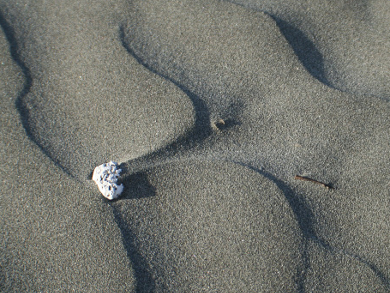Switching between Solid and Liquid Behavior
Disorder and defects are usually considered problems in materials science, but sometimes these problems can become features, so suggests Heinrich Jaeger, University of Chicago, IL, USA. Writing in the journal Soft Matter he details the potential for “jamming ” soft matter so that emergent behavior can become manifest. Disordered, amorphous materials can switch between a rigid state and a fluid-like plasticity. Such systems have been demonstrated on the micro and macro scales.
“Jammed” colloids, suspensions and granular materials have potential in a wide range of applications, including, but not limited to engineering, robotics and even architecture. These two-faced controllable materials could be used for articulated joints, for instance, or for building foundations that can adapt during tremors to make them resilient to earthquakes.
Jaeger, who is in the James Franck Institute for interdisciplinary research at the intersection of physics, chemistry and materials science at the University of Chicago, has for many years focused on self-assembled nanoparticles, the rheology of dense suspensions and on packing and flow in granular materials. He explains that the phenomenon of “jamming” is of particular interest in these contexts.
What is “Jamming”?
Jamming is the onset of rigidity in disordered and amorphous materials in which short-range repulsive forces between the constituent particles when pushed cause system-wide structural changes. In conventional phase transitions, it is a change in temperature or pressure that gives rise to a shift from one form to another. On the other hand, in jamming, a material far from thermodynamic equilibrium, changes not because of a temperature rise or fall but because of local geometric effects.
A quite mundane and yet intriguing everyday example of jamming is the rigidity of a brick of vacuum-packed coffee granules. The brick feels quite rigid in one’s hands, the granules are jammed together in a confined space and act, to all intents and purposes, as if they are a single, solid mass. However, snip the corner from the bag and allow the air in and the geometric constraint is lost and the coffee granules take on the properties of a more fluid-like material, allowing one to pour the requisite quantity into one’s coffee machine.
If jamming is the confined aggregation that leads to rigidity, then the reverse process is unjamming in which the solid becomes more fluid. There are other examples on much larger scales such as dry-stone walls, harbor breakwaters or jetties comprising piled up boulders deposited on a beach, or gravel railroad ballast acting as foundation for rails. On a much, much smaller scale, jamming is involved in the rigidification of liquid droplets in non-spherical shapes by coating with nanoparticles.
Jaeger points out that jamming and unjamming perhaps underpin many of the non-Newtonian fluid phenomena such as shear thickening of the kind that makes a mixture of cornstarch and water so difficult to stir quickly and so easy to run across a swimming pool full of the stuff if one is confident of its thixotropic properties, allows gloss paint coatings to be applied steadily with a brush but precludes the formation of droplets on the painted surface. Jamming/unjamming have been exploited already in gripping devices, flexible manipulators and robotics and new types of prosthetic hands and joints where jamming is used to make a strong, rigid grip that can also be soft for holding fragile objects and “switched off” by releasing the geometric constraint and allowing flexibility again.
Potential Applications of “Jammed” Materials
In his Soft Matter review, Jaeger provides a detailed analysis of the processes involved in jamming and unjamming as well as outlining how this is applied to current systems and how it might be exploited in the development of “designer” materials that are prepared for specific applications in which the phenomenon will be of use.
“Jamming not only provides a means to transform matter quickly and reversibly from a fluid-like into a solid-like state, but the resulting rigid structures can be robust and highly defect tolerant, reconfigurable and adaptive to external load changes”, Jaeger says. The potential for designer jammed materials is enormous and with advances in chemical synthesis, lithographic techniques and 3D printing, or prototyping, designs for many disparate applications might now be possible on almost all size scales.
“At first glance jamming of particles seems to be a very simple phenomenon,” Michael Schmiedeberg, Heinrich-Heine-Universität Düsseldorf, Germany, told ChemistryViews.org. “However, many theoretical aspects of the jamming transition, e.g., its relation to the slowdown of dynamics in dense particulate systems, are still under debate and the topic of a lot of ongoing research activities.” He adds that the importance of the review by Jaeger lies not only in his focus on the quest to tune the properties of jammed systems by design but also stems from the fact that it spans the whole field of jamming from theoretical aspects to applications. “It will motivate more researchers to study the properties of jammed systems, to find out how these properties can be influenced by design, and to think about possible applications of jammed systems with specific properties,” Schmiedeberg adds.
- Toward Jamming by Design,
Heinrich Jaeger,
Soft Matter 2014.
DOI: 10.1039/C4SM01923G




